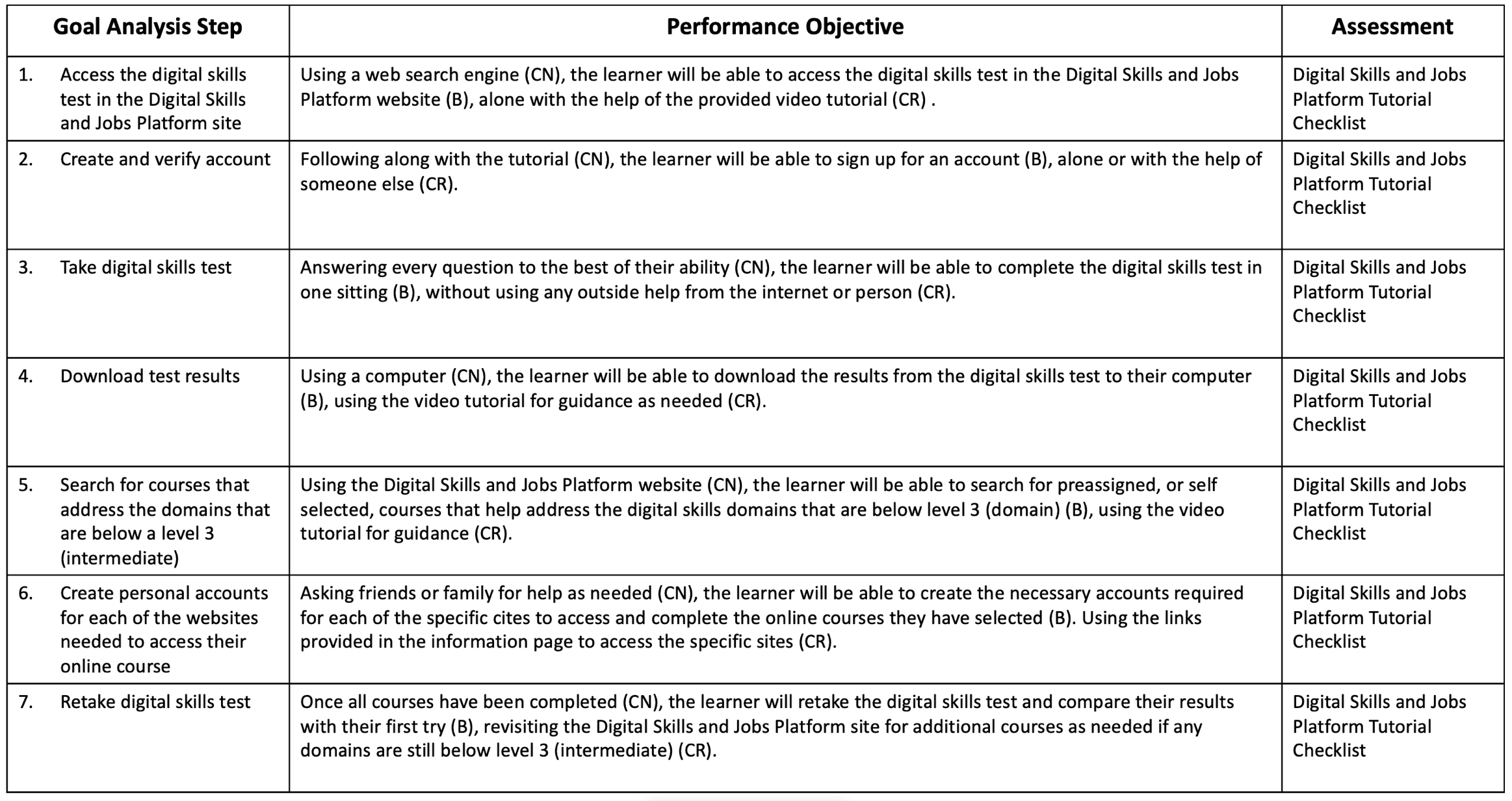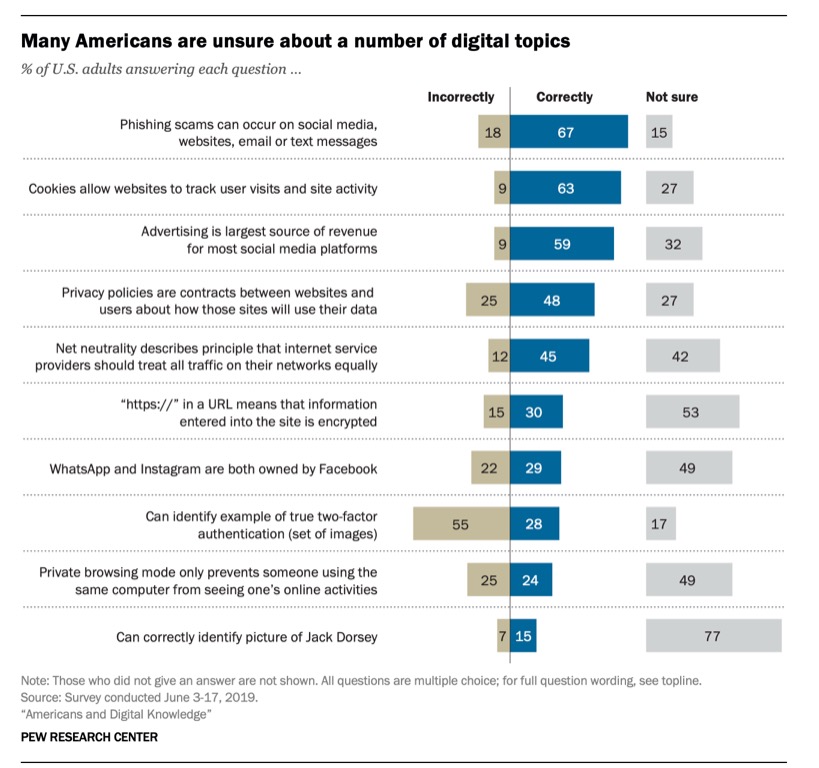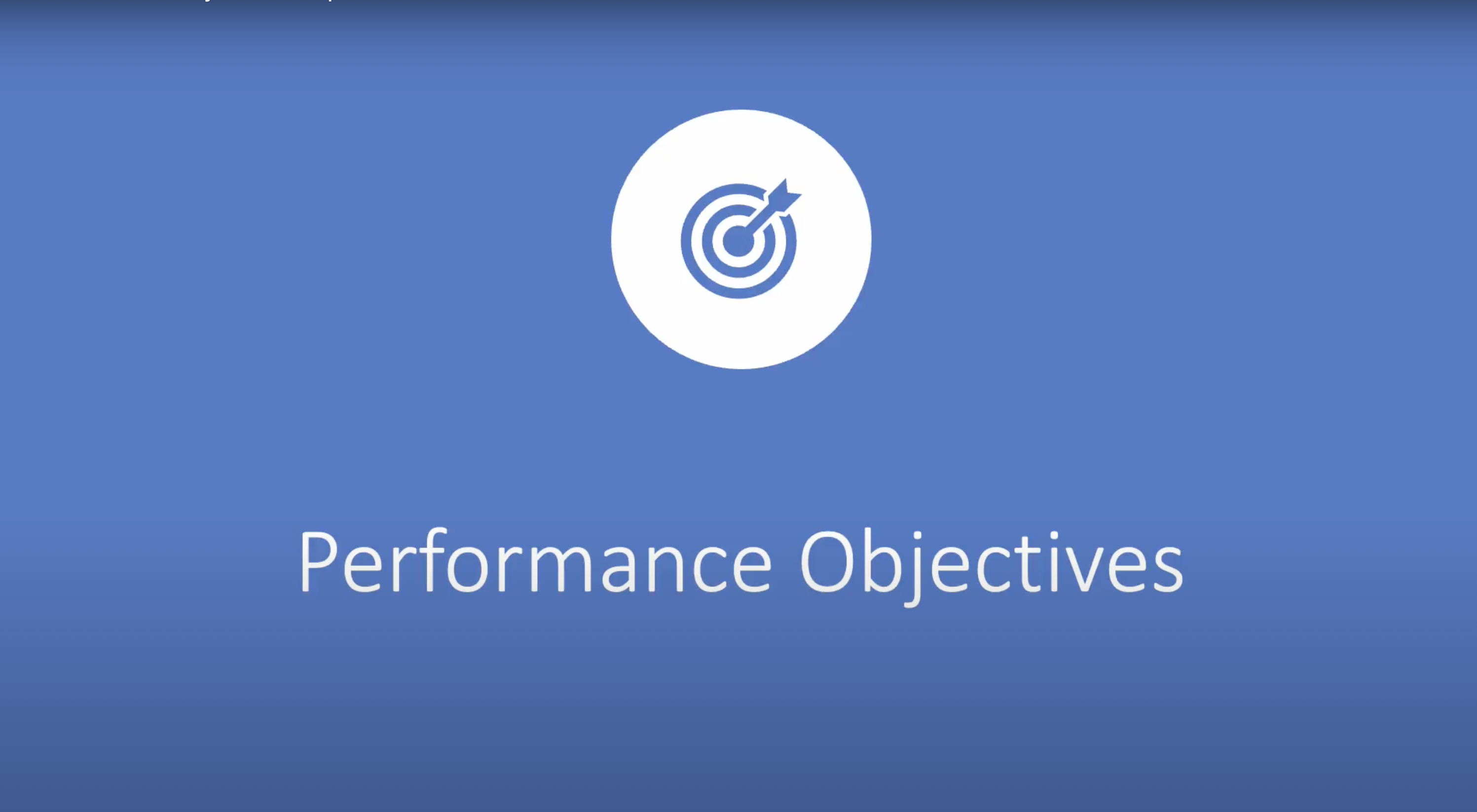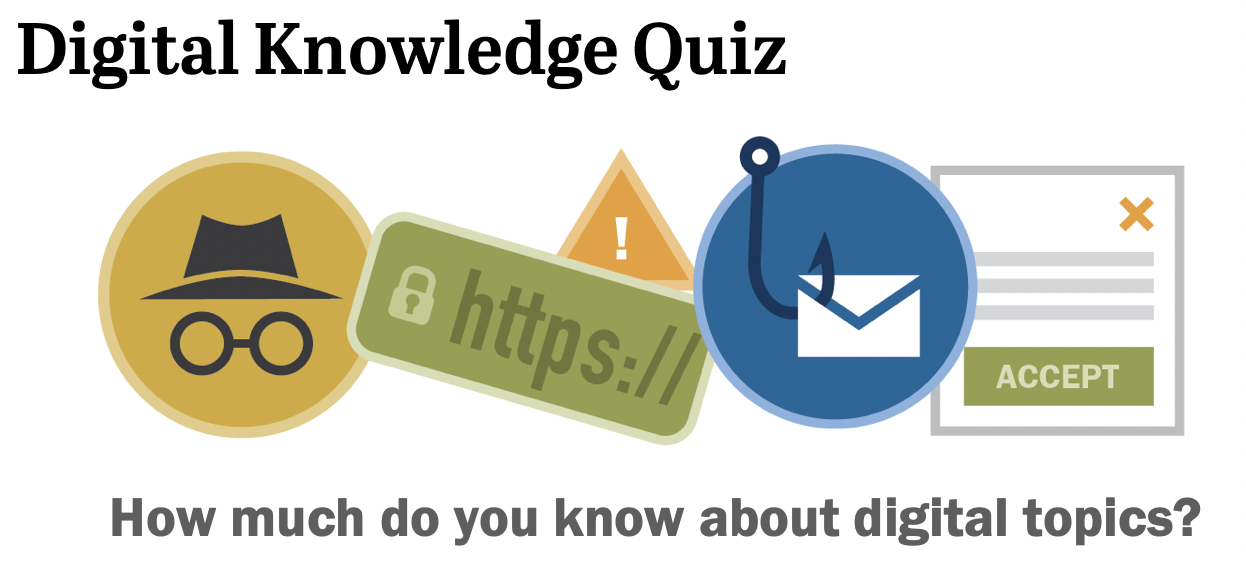Capstone Project

Master’s LDT Capstone Website by Daniel Burgos at the University of Houston.
Document Design
- Need for the Project
- Learning Context
- Learner Analysis
- Learning Objectives
- Instructional Strategies
- Formative Evaluation & Plan
- Student Personal Learning Statement
Need for the Project
As an educator, and as someone who is skilled at using technology for personal and professional use, I have noticed that the majority of the population does not possess the necessary skills in order to navigate the internet safely, as well as utilize technology in ways that best adapters technology to their needs, not the other way around. This observation also includes educators, especially those that are older in age and whose fields do not rely heavily on technology use. I joined the teacher workforce at the start of the pandemic, and had many questions, as all new teachers do, however, veteran teachers were unsure how to address my areas of concern, as education had never had to suddenly transition to an online mode of teaching and learning. One of the primary struggles that educators faced was the lack of systems of support, as well as resources that would aid in the transition to a different medium of teaching delivery. The primary issue wasn’t the lack of content knowledge, but rather, the lack of experience, on how to adapt lessons to an unfamiliar medium of teaching. The only guidance that was received came from district attempting to provide educators with professional development training that had to be rushed due to the urgency to get teaching right away.
The Pew Research has a digital knowledge quiz that people can take for free and shows a statistical representation of how much people know (got right) with regard to privacy, cyber security, and technology. The main headline, and the results were a source of inspiration for my project.
A majority of U.S. adults can answer fewer than half the questions correctly on a digital knowledge quiz, and many struggle with certain cybersecurity and privacy questions (Vogels & Anderson, 2019).
Most people can execute basic functions that meet their daily needs, however, when a situation arises that requires them to utilize their current digital skills, and apply it to a new problem, there seems to be a disconnect in the necessary steps to take in order to achieve that goal.
Rationale For The Need For Instruction
Although it is believed that those born in an age of technology (digital native) where technology is accessible from a young age are computer, and digitally literate, that is not the case. Mere exposure does aid with technology utilization, however, it does not equate to how adequate or technology competent young individuals become by the time they reach the university or professional level. The solution to this issue already exists, all it requires is gathering materials and presenting educators with a simple way to access them. One example of this are massive open online courses that can be attended, or completed at a steady pace, and provide users with the tools necessary for becoming technology/digitally competent. Frameworks, and guidelines also exist, with clear standards, and the level of proficiency within each standard, that help educators determine where their ability levels lie, and what they should be able to accomplish in order to become more proficient at each standard.
Instructional Goal
Teachers will be able to use MOOCs and other online resources to help address digital competency knowledge gaps when utilizing technology in a professional or personal setting.
Learning Context
The medium of learning will be online. All of the instruction the learners receive will be online, however, the skills and knowledge that they build as a result of their online training will be performed, and utilized in the classroom. Most schools are back to the traditional, in person teaching model, however, the abrupt shift to online education that left the world shell-shocked has left its mark on education. One of the traces left behind by the COVID pandemic are the devices that remain in the possession of schools districts. The skills the learners will receive via the online learning medium will be directly applicate to their daily lives as well as the professional setting. The five domains of the digital skills test are: Information and data literacy, Communication and collaboration, Digital content creation, safety, and problem solving. All of these domains apply to at least the professional or personal setting of the learner, most with an overlap on both types of settings. Because the courses require the learner to self enroll, and are self paced, educators have the liberty of completing them at their own leisure in terms of time and place.
Learner Analysis
The target audience for my instruction are educators who consider themselves to be beginners when it comes to utilizing technology for professional or personal use. According to the National Center for Educational Statistics, over 65% of educators are over the age of 30. While it is believed that those that are born in an age where access to technology is the norm, this access to technology does not directly equate to technology competency, especially for academic or professional use, as that requires a higher degree of competency to achieve. My instruction targets this population in order to provide the learners with more autonomy and confidence in order to maximize their use of technology. Honing in on the specifics of the learner, a world wide study conducted by the IEA (International Association for the Evaluation of Educational Achievement) called the International Computer and Information Literacy Study (ICILS) where over 26,000 teachers from 14 countries participated in the study. The study reported that the following are the tasks teachers are least comfortable performing:
- Using learning management systems (59%), contributing to online discussions (58%), collaborating with others online (57%), and most comfortable Finding teaching resources on the internet (95%), producing presentation (84%).
The study also revealed that the most frequent use of information communication technology (ICT) was:
- The presentation of information through direct class instruction 64%, the communication with parents or guarding’s about students’ learning45%, the support of student led whole class discussions and presentations 43%.
The least frequent uses were:
- The provision of feedback to students on their work 32%, the support of collaboration among students 31%, the mediation of communication between students and experts or external mentors 26%.
Teachers who are confident in their own CIL abilities who have a positive perception of ICT use in teaching and learning and teachers who feel they work in a collaborative professional environment are more likely to emphasize CIL and CT in their teaching (ICILS, 2018).
Some of the entry behaviors the learners could have are a slight reluctance to invest large amounts of time in to the courses, as technology skills might not appear to be something of the highest degree of importance to their personal or professional lives. Skills involving the pedagogy of teaching, or alternate activities that will produce immediate results may seem like more enticing options to spend their time on. Educators interact with technology on a consistent basis, whether that’s for personal or professional use and this gives them a basis, or prior knowledge on the topic. Although most educators interact with technology every single day, most don’t do so in a complex way such as to achieve the highest level of Bloom’s Taxonomy. The 2019 pandemic changed the perceptions educators had on technology integration; one of those was the immediate need to use it, rather than the option to integrate it. Technology became essential to conduct tasks that once seemed rudimentary in an in person classroom model. The delivery system causes some uneasiness on the learners.
Most learners (the educators) of this age group are not familiar with online learning, and are more accustomed to the traditional in person model for teaching and learning; there is reluctance and doubt on how successful instruction can be that’s delivered on a medium they are not comfortable operating in. Many schools still possess those student devices that were used during the time schools were online. Technology integration in the classroom has gone up, and this is one of the motives to incentivize utilizing this technology to its maximum potential The Pew Research has a digital knowledge quiz that people can take for free and shows a representation of how much people know with regard to privacy and cyber security;
A majority of U.S. adults can answer fewer than half the questions correctly on a digital knowledge quiz, and many struggle with certain cybersecurity and privacy questions (Vogels & Anderson, 2019).
I believe that these results are also reflective of the subset teachers belong to.
Terminology:
- CIL (Computer and Information Literacy)
- ICT (Information and Communication Technology)
- CT (Computational Thinking)
Analysis of Learning Task
My instructional goal is an intellectual skill and these are the major steps to achieve the goal:
- Access the digital skills test in the Digital Skills and Jobs Platform site
- Create and verify account
- Take digital skills test
- Download test results
- Search for courses that address the domains that are below a level 3 (intermediate)
- Create personal accounts for each of the websites needed to access their online course
- Retake digital skills test



Learning Objectives

Assessment
An example assessment questionnaire would look like this:

Instructional Strategies
Internet or intranet web-based instruction
Instruction will be delivered in the form of instructional videos that guide the learner on the steps they need to take and do in order to meet the varying performance goals. There will be instances where the learner will need to do something that was not shown in the instructional videos, however, these potential tasks will not deviate much from the core instruction being provided to the learner.
One potential solution to the issue that arises from providing feedback to unknown learners is through the use Google Forms where learners are able to contact me directly and we can communicate via the contact information that they provided in the form in order to assist with their questions or needs, and provide feedback.
The instruction delivery has been broken up by objectives, and each objective has its own designated video to go along side it. However, an issue arose where I am not able to provide instructional videos on all of the potential MOOCs the learner can find themselves registering to. So, what I did instead was to create a video showing the learner how they would go about finding, and singing up to a MOOC on their own for each of the domains tested in the digital skills test.
Pre instructional activities
In order to grab the attention of the learners I will share the results of the Pew Research quiz on digital knowledge that people can take for free and shows a statistical representation of how much people know (got right) with regard to privacy, cyber security, and technology on the quiz. I will also share a picture of the questions along with the accuracy per questions, and this quote:
… just 28% of adults can identify an example of two-factor authentication – one of the most important ways experts say people can protect their personal information on sensitive accounts. Additionally, about one-quarter of Americans (24%) know that private browsing only hides browser history from other users of that computer, while roughly half (49%) say they are unsure what private browsing does (Vogels & Anderson, 2019).
The headline, picture, quote, and quiz attempt will be what will allow me to catch their attention. To attach relevancy to the task, we need to give statistics on how much teachers use technology on a daily basis, for what reasons, and how confident they feel in using it. This will come from the ICILS study, and will resonate with them since many were educators during the pandemic attempting to teach in an online medium. I will also reassure the learners that since they are teachers, they know that all children are capable of learning and growing in to better versions of themselves. Learners are not not limited to the ages of 5-18, learning is a life long process. Satisfaction will be achieved while the learner is proceeding through the courses and working through the quizzes. Their grades, in the respective MOOCs, will be available directly after finishing a quiz, and earning that high grade will help them get to feel a similar satisfaction that will come at the end of all the courses. As well as, when they retake the digital skills quiz, and see their growth through the provided report at the end.
- Content presentation: Describe to the learners what the unit is about. Following a deductive pattern (show the learner how to distinguish the pieces of new learning and the structural relationships among the pieces to put them all together into a coherent whole.) of presentation.
- Learner participation: Feedback is tricky in this stage due to the nature of the medium in which instruction is being delivered
- Assessment: The same test will be used as the pretest and the posttest to maintain a level of consistency throughout the questions to show the learner how much they have grown form their previous attempt. Throughout the courses learners will navigate they will be given formative assessments as a way for them to be able to measure their growth and test their theoretical knowledge of the content being taught to them.
- Follow-through activities: Provide the learners with GCF Global site that lists the most basic forms of troubleshooting, has a mini online course on computer basics, a Youtube playlist on computer basics, and an additional technology quiz at the end of their mini course. This resource can be their go to when attempting to troubleshoot technical issues on their own in the classroom or at home.
Materials
- Basic Troubleshooting
- Additional Course: Computer Basics
- Additional Course 2: Computer Basics
- Online Learning Tool
- Online Learning Tool 2
- Online Learning Tool 3

Formative Evaluation and Plan
For my formative evaluation, I plan on getting the guidance of Mrs. Solano for my one to one evaluation, a teacher a teacher one year away from retiring, my 7th grade PLC team, which consists of Mrs. Solano, Mrs. Sanders, and Mr. Stephens. Mrs. Sanders has10 years of experience, and Mr. Stephens has over two decades of teaching experience. For my field trail (learner perspective), I will also be meeting with my PLC team after they evaluate my materials and lesson from the perspective of a teacher. They will be my small group for feedback from the perspective of a teacher, and then after viewing my materials and lesson, from the perspective of a student. I will first meet one on one for my professional review, then with a small group, and then the field trial.
Expert One-to-One Evaluation
The following is the feedback and comments Mrs. Solano had after she reviewed my instructional materials from the perspective of a teacher. Materials are appropriate, and are targeted toward the learner. The instruction is being delivered in a way that targets learners in a foundation (beginner) level in the digital skills platform. More resources need to be provided for teachers with higher competency (digital skills) at utilizing technology. It would be ideal to meet the varying levels of digital proficiency, but that would also increase the complexity, and amount of materials required. The materials provide the learner with enough opportunity to show their autonomy when it comes to them developing their skills in the specified domains. The materials do provide enough instruction to meet the subordinate skills, and eventually the instructional goal. The primary source for the resources is provided, so learners can continue their own discovery on the platform. One question to consider is the region of the target learners as the instruction appears to be more geared to teachers in the U.S. and consideration for other countries’ laws can affect the instruction.
Students would have more motivation in going through all this work to develop their digital skills if the output, or the effect of their training was emphasized more. For example, one big motivating factor would be to show how the teacher can then use these skills in the classroom. This would take the form of showcasing or providing the learner with a list of tools that they can integrate; this will be based on their level of competency. So the instruction was made on the analysis that there is a digital competency gap in the use of technology, and that educators need to be more skilled at utilizing technology. Although this is true, learners need a motivating factor such as, with these new skills the realm of possibilities opens up in terms of the tools that the learner can now integrate in to their classroom. One example of this would be: After going through several modules of instruction, the learner is now more skilled at utilizing advanced tools that can provide benefits to classroom instruction, or activities that would otherwise be inaccessible due to the skill of the teacher.
Small Group Evaluation
For my small group evaluation I met with Mrs. Solano, Mrs. Sanders, and Mr. Stephens. All three of them reviewed my materials and there was a similar consensus over the clarity. One careful consideration that needs to be made is that when resources are provided to the learner they need to be paced carefully, or else they all start to blur and become a overwhelming due to all of the possibilities. One way of introducing these tools is providing them to the learner based on a course that they can take. For example, once the learner has completed the instruction for the security domain, several tools can be provided to help utilize those new found skills in the classroom to more safely browse the internet (VPNs, Password Mangers, etc). These tools can then be divided in terms of their complexity, giving learners the autonomy to choose which tool is right for them based on their current ability level.
Student Personal Learning Statement
The instruction that was provided met the learning goal of providing me with the tools and resources in order to assess my current digital skills and a road map for further improvement through the use of the digital skills and job platform sites. As a medium to advanced technology user, I believe the instruction still applied to me even though it is more geared to educators with a beginner skill set. I enjoyed the flexibility that the massive open online courses offer in terms of progression, and can see the courses as something I can pick up and continue as needed on my own time or depending on the varying dynamics/needs of my classroom. The most useful resources I found were the websites with digital tools that I can incorporate in to my classroom based on the type, usage, or by popularity among users. As with anything that requires an investment of my time, the main question that lingered in my mind was “How can I use this to better serve my students?” The digital tools websites provide me with what I need to continue to grow.

